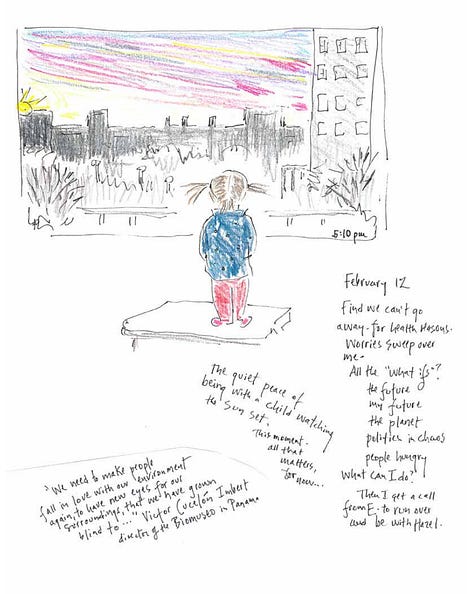I didn’t wake up that day with the task of snooping on schedule, but there are many common spaces at the mill where I live, so personal objects can become public. Within a few minutes and out of hundreds of books on the shelf, I reached for the small, dark-spined journal. Half an hour later, I closed the back cover, not a page skipped.
I wouldn’t say I’m egregiously nosy, but I’m always intrigued to read what others have written to themselves on scraps of paper, in their phone notes, and occasionally in their diaries. My ethics here are flimsy, but my curiosity about how others express their inner worlds is never-ending.
Life writing is one of my most favorite genres and forms of creativity, and the Oxford Centre for Life Writing has great information on the study of life writing here. Their examples are expansive:
Life-writing includes biography, autobiography, memoirs, letters, diaries, journals, anthropological data, oral testimony, eye-witness accounts, biopics, plays and musical performances, obituaries, scandal sheets, and gossip columns, blogs, and social media such as Tweets and Instagram stories.
I’ve gravitated toward this type of work for a long time, in my journals and beyond. My reading practice, for example, has long tended towards life writing. In high school, I became enamored by stories with multiple narrators, like Winesburg, Ohio and As I Lay Dying. Fragmented interior thoughts made sense to me as a way to show a complete picture of a place or family, as well as their composite individuals.
My professional work has also craved life writing. The first project I took on as a young editor at an independent book press was an art book of journal entries collected over many years of life by my dear friend Clare. I walked into the publisher’s office, saw the black binder sitting on her desk, and asked “What’s in there?” Two years later, we published A Year in Nature.



Of course, Clare sent that binder to the press with full consent that these journals be read. I admit, I don’t always ask, and it does get me into trouble.
Last summer, while impatiently waiting for a love letter response, I read the jumbled ideas of the draft and was elated. But when the letter was finally handed to me weeks later, it was a formal, typewritten thing that felt void of the feeling I’d read in the draft.
To be fair, I was looking for a way out, so it’s not surprising that I justified a break by telling myself that font choice says a lot about a person. Looking back, I realize that the chasm between perfect and real was between us, not before us, and I first recognized that in the difference between drafts.

I don’t think journaling is the superior art, that it gets you any closer to the truth than mining each syllable of a poem towards the capture of a feeling. But I do think there is much to cherish about raw expression, first attempts, late-night rambling emails, and unsent messages.
Or maybe I’m just a nosy son of a bitch.





